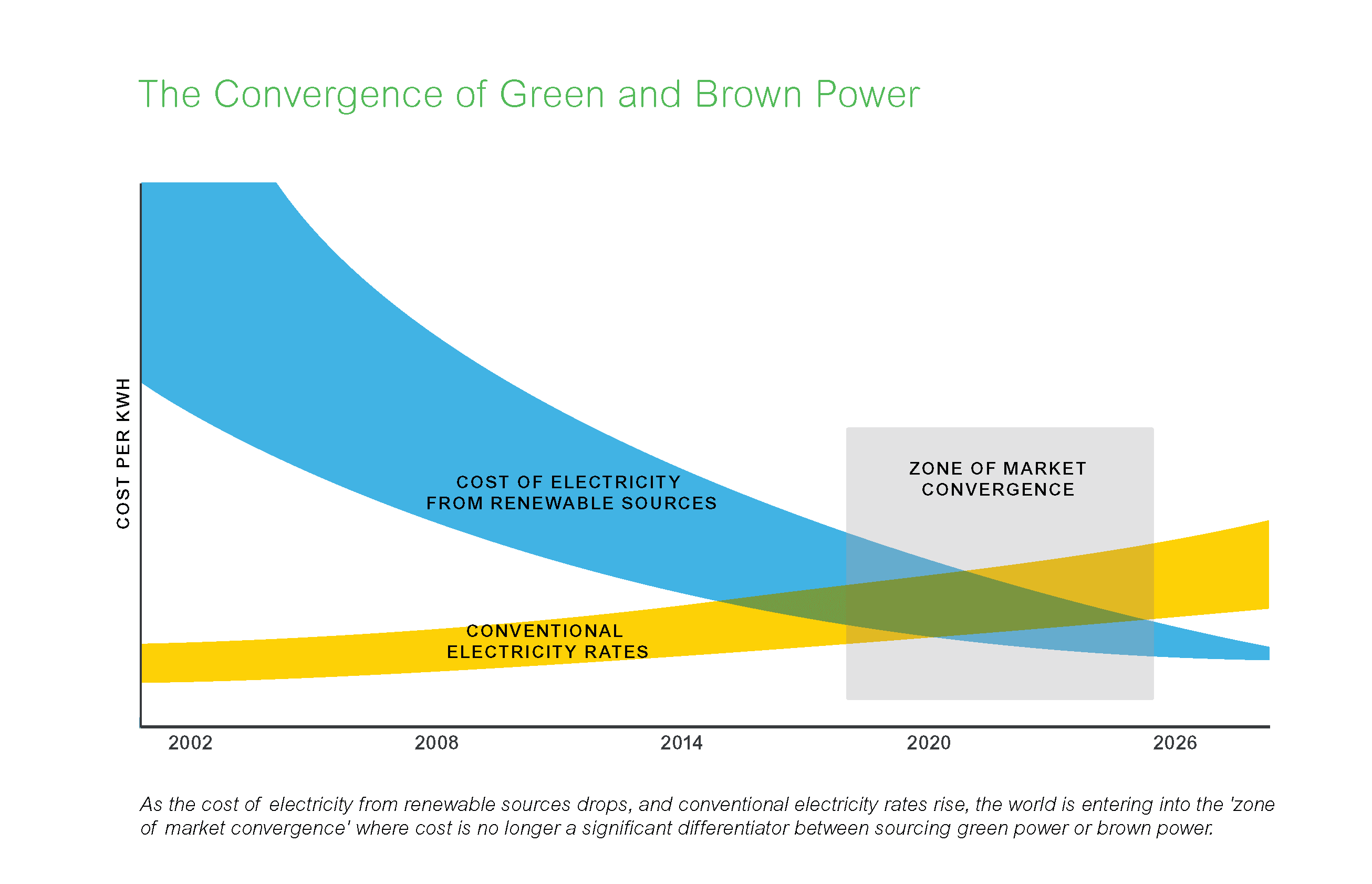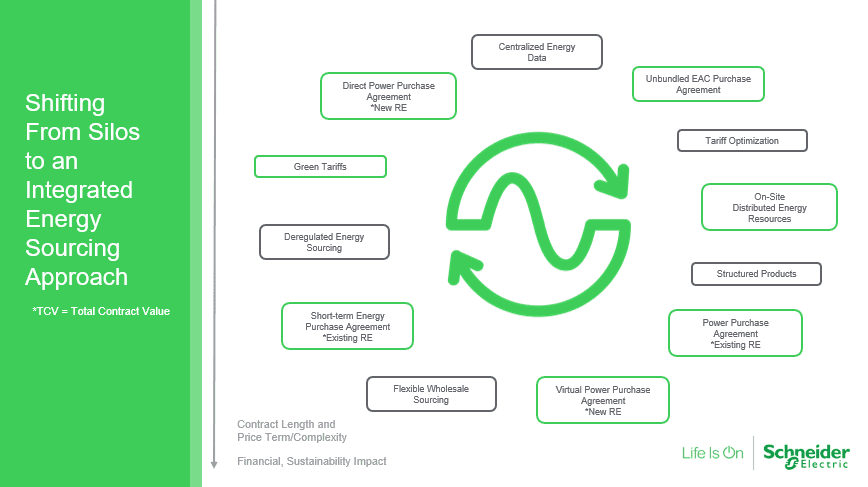4 Ways Renewable and Traditional Power Convergence Will Affect Your Business
Credit to Author: Frederic Abbal| Date: Fri, 19 Jul 2019 11:48:47 +0000
The previous post in this series introduced three megatrends pointing to an evolving energy market. This evolution is changing how companies strategically source and manage their energy around the world.
Emerging price parity of green power (such as wind and solar) and brown power (power traditionally supplied by the grid) is a cornerstone of the evolution of the energy market. The cost of wind and solar power have been on a precipitous decline for the past decade, bolstered by subsidization and increasing efficiencies in both technology and scale.
Learn more about the energy transition in our new infographic.
As a result, renewable penetration on the grid has now reached roughly 33% globally, with increasing adoption forecast. This growth means that, alongside traditional brown power options for electricity, green power is now emerging as a more cost-effective choice. It also means that there are more suppliers in the market than ever before, and organizations in deregulated retail regions can now potentially evaluate green and brown power procurement on a level playing field.
How will this convergence likely impact your business?
- Green power will become more accessible.
If you haven’t already, you will begin to see increasing access to green power options around the world. The low price—and increasing demand—for fossil-free generation means that there has never been a greater opportunity to adopt renewables.
- Going green will be more cost effective.
Green power options are increasingly affordable, and for those solutions that may require a CapEx investment (such as an owned, onsite solar system), energy efficiency and energy-as-a-service solutions are potential avenues towards financial enablement.
- Companies will find synergies by developing an integrated sourcing strategy.
The resulting combination of strategic sourcing, renewables procurement and efficiency form the basis for a more sophisticated, integrated and cost-saving energy solution. Organizations are more likely to begin purchasing bundled services from providers than can address their energy needs holistically as a result.

4. But buyers must beware when new opportunities emerge.
As existing energy solution providers take more innovative approaches to their services, and new providers enter the market hoping to capitalize on this growing need, organizations must be critical of any service offer, and ensure that it provides the greatest benefit with the lowest exposure. For instance, it can be attractive to companies to accept green power solutions provided by their traditional power supplier to streamline complexity. But these solutions may not be the best in the market or may expose the buyer to unnecessary risk.
Fundamental changes in the generation mix are driving market evolution and making it more complex than ever for companies to purchase energy. An independent advisor like Schneider Electric Energy & Sustainability Services can help you evaluate your choices as the market converges to ensure you get the best solutions, at the best price, with the least amount of risk.
To learn more about how to navigate market convergence, the associated opportunities and challenges and how your company can prepare, view our Integrated Sourcing content stream.
The post 4 Ways Renewable and Traditional Power Convergence Will Affect Your Business appeared first on Schneider Electric Blog.